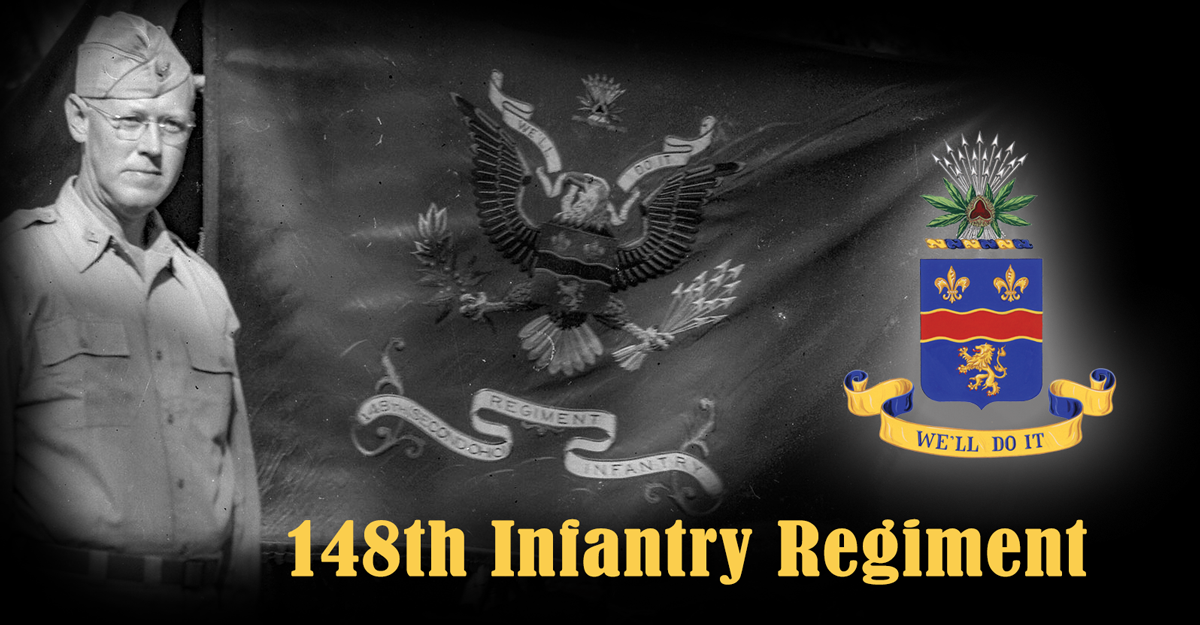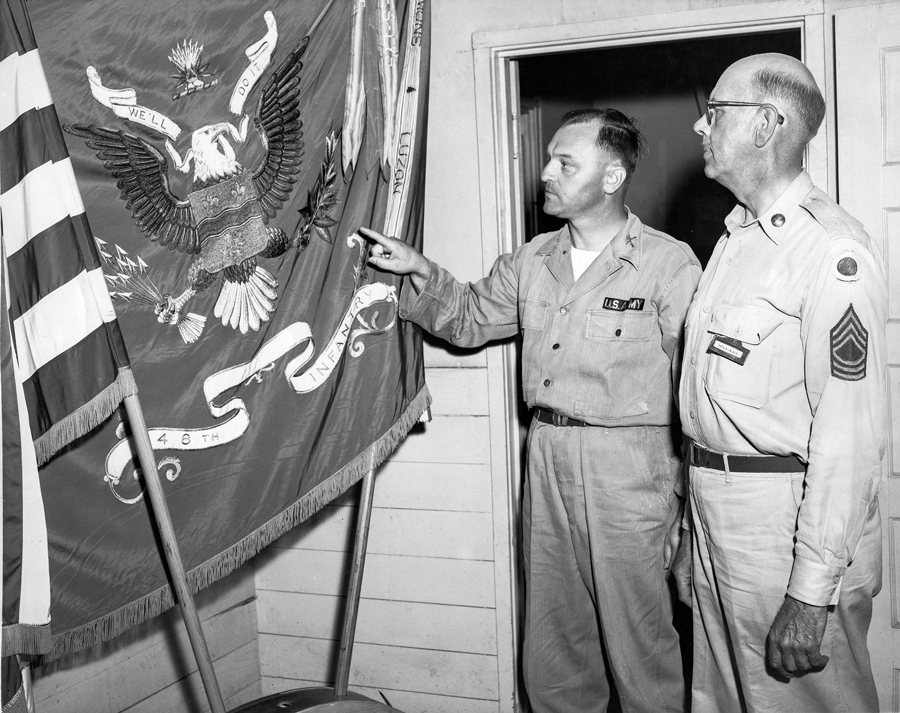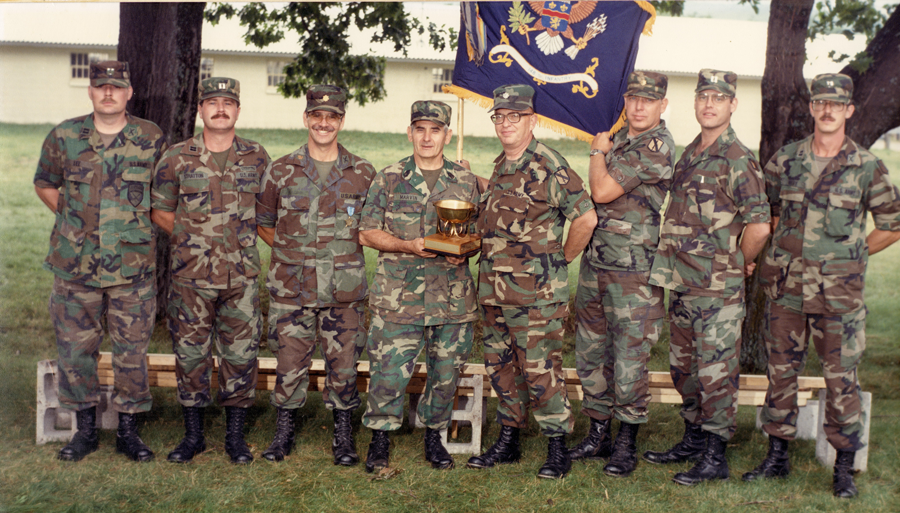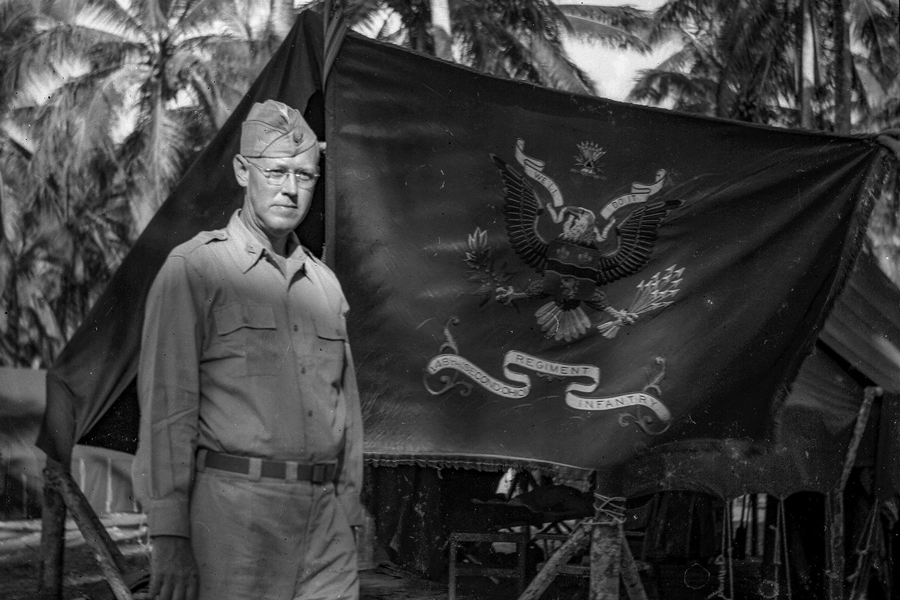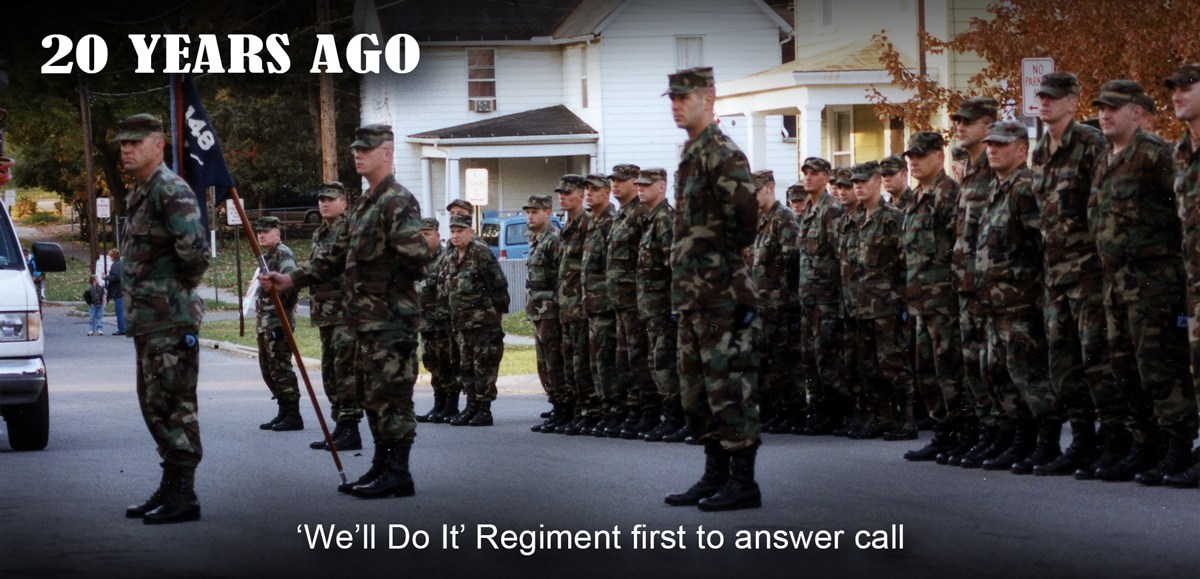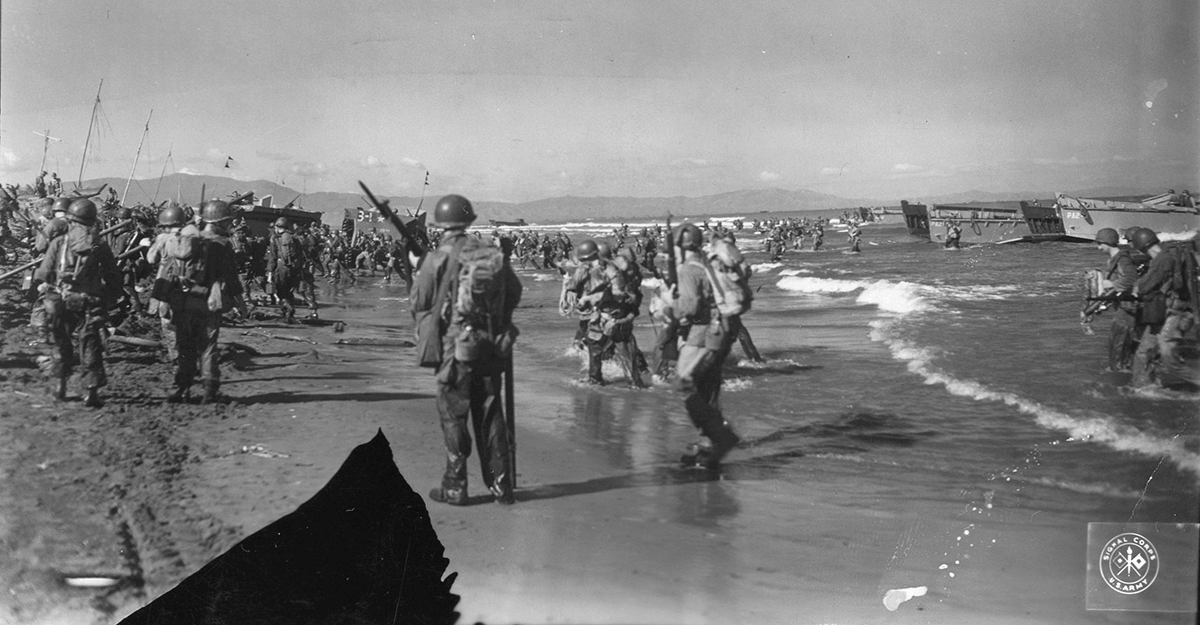100 YEARS AGO:
148th Infantry coat of arms first in Ohio Guard to gain Army approval
Story by Sgt. 1st Class Joshua Mann, Ohio National Guard historian

Institute of Heraldry’s drawing of the coat of arms for the 145th Armored Regiment.
DESCRIPTION/BLAZON
SHIELD: Azure, a fess wavy Gules fimbriated Or, between two fleurs-de-lis in chief and a rampant lion in base of the last.
CREST: From a wreath Or and Azure, a sheaf of seventeen arrows Argent, bound by a sprig of buckeye (aesculus glabra) fructed Proper (two leaves bursting burr).
SYMBOLISM
SHIELD: The shield is blue for Infantry divided by a wavy fess of red, bordered by two gold bands, representing the Escaut River in Belgium, which the Regiment, under heavy fire, was the first of the Allied Troops to cross during World War I, costing the lives of many men, but held in the face of concentrated artillery fire and in the face of counter attacks. Two gold fleurs-de-lis, taken from the ancient French Arms denote service in France, the holding of two sectors in that country, the gold lion rampant is taken from the ancient French Arms denote service in France, the holding of two sectors in that country; the gold lion rampant is taken from the arms of Belgium and denotes service in that country in the Ypres-Lys offensive. At the time of the crossing of the Escaut River, the units attempting the act were just a little doubtful as to how a swift river could be crossed without pontoons. Lt. Col. Marlin, then Maj. Marlin, reminded them of a certain ceremony that was to be performed on reaching the Rhine, and with the catch phrase “We’ll Do It,” the Soldiers fell to work, cut down a tree across the Escaut and crossed, Indian file, over the three.
CREST:The crest is that of the Ohio Army National Guard.
On APRIL 21, 1923, the 148th Infantry Regiment became the first Ohio National Guard regiment to have a coat of arms approved by the U.S. Army.
By Army regulation, each regiment and separate battalion is authorized a coat of arms — consisting of a shield, crest and motto — that is included in the organizational colors. On each set of colors, an eagle’s breast is embroidered with the shield of the coat of arms and the crest is above the eagle’s head. The eagle’s beak grasps a white scroll inscribed with the unit motto. All heraldic items reflect the unit’s history and, since 1960, are approved by The Institute of Heraldry, Department of the Army.
Approval of coats of arms for U.S. Army units began shortly after the conclusion of World War I. The design and symbolism of each follow traditional heraldic principles that date back to the 12th century. Once approved, each coat of arms includes a blazon, or heraldic description, using traditional terms to describe the design. The symbolism is a modern explanation of each color and symbol and how it connects to the unit’s history.
That September, the Army approved the distinctive unit insignia for the regiment. The insignia is small metal and enamel device that is worn on the uniforms of the Soldiers assigned to the regiment. The insignia is the coat of arms, with the addition of a scroll below the shield inscribed with the unit motto.
On APRIL 21, 1923, the 148th Infantry Regiment became the first Ohio National Guard regiment to have a coat of arms approved by the U.S. Army.
By Army regulation, each regiment and separate battalion is authorized a coat of arms — consisting of a shield, crest and motto — that is included in the organizational colors. On each set of colors, an eagle’s breast is embroidered with the shield of the coat of arms and the crest is above the eagle’s head. The eagle’s beak grasps a white scroll inscribed with the unit motto. All heraldic items reflect the unit’s history and, since 1960, are approved by The Institute of Heraldry, Department of the Army.
Approval of coats of arms for U.S. Army units began shortly after the conclusion of World War I. The design and symbolism of each follow traditional heraldic principles that date back to the 12th century. Once approved, each coat of arms includes a blazon, or heraldic description, using traditional terms to describe the design. The symbolism is a modern explanation of each color and symbol and how it connects to the unit’s history.
That September, the Army approved the distinctive unit insignia for the regiment. The insignia is small metal and enamel device that is worn on the uniforms of the Soldiers assigned to the regiment. The insignia is the coat of arms, with the addition of a scroll below the shield inscribed with the unit motto.
